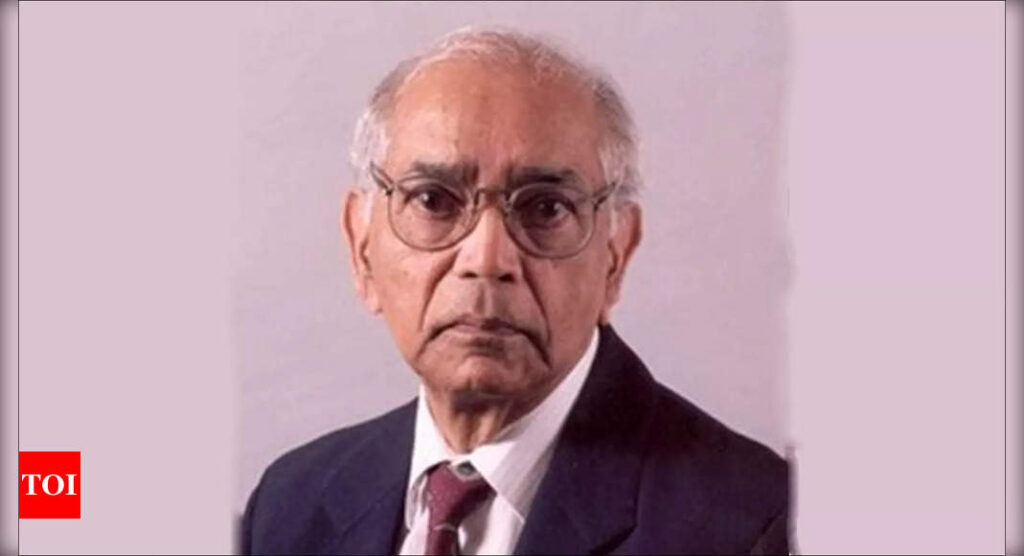WASHINGTON: Calyampudi Radhakrishna Rao, a prominent Indian-American mathematician and statistician, will receive the 2023 International Prize in Statistics, the equivalent to the Nobel Prize in the field, for his monumental work 75 years ago that revolutionised statistical thinking.
Rao’s work, more than 75 years ago, continues to exert a profound influence on science, the International Prize in Statistics Foundation said in a statement.
Rao, who is now 102, will receive the prize, which comes with a USD 80,000 award, this July at the biennial International Statistical Institute World Statistics Congress in Ottawa, Ontario, Canada.
“In awarding this prize, we celebrate the monumental work by C R Rao that not only revolutionized statistical thinking in its time but also continues to exert enormous influence on human understanding of science across a wide spectrum of disciplines,” said Guy Nason, chair of the International Prize in Statistics Foundation.
In his remarkable 1945 paper published in the Bulletin of the Calcutta Mathematical Society, Rao demonstrated three fundamental results that paved the way for the modern field of statistics and provided statistical tools heavily used in science today, the Foundation said in a statement on April 1.
The first, now known as the Cramer-Rao lower bound, provides a means for knowing when a method for estimating a quantity is as good as any method can be, it said.
The second result, named the Rao-Blackwell Theorem (because it was discovered independently by eminent statistician David Blackwell), provides a means for transforming an estimate into a better—in fact, an optimal—estimate. Together, these results form a foundation on which much of statistics is built, the statement said.
And the third result provided insights that pioneered a new interdisciplinary field that has flourished as “information geometry.” Combined, these results help scientists more efficiently extract information from data, the statement added.
Information geometry has recently been used to aid the understanding and optimization of Higgs boson measurements at the Large Hadron Collider, the world’s largest and most powerful particle accelerator.
It has also found applications in recent research on radars and antennas and contributed significantly to advancements in artificial intelligence, data science, signal processing, shape classification, and image segregation.
The Rao-Blackwell process has been applied to stereology, particle filtering, and computational econometrics, among others, while the Cramer-Rao lower bound is of great importance in such diverse fields as signal processing, spectroscopy, radar systems, multiple image radiography, risk analysis, and quantum physics.
Rao was born to a Telugu family in Hadagali, Karnataka. His schooling was completed in Gudur, Nuzvid, Nandigama, and Visakhapatnam, all in Andhra Pradesh.
Rao’s work, more than 75 years ago, continues to exert a profound influence on science, the International Prize in Statistics Foundation said in a statement.
Rao, who is now 102, will receive the prize, which comes with a USD 80,000 award, this July at the biennial International Statistical Institute World Statistics Congress in Ottawa, Ontario, Canada.
“In awarding this prize, we celebrate the monumental work by C R Rao that not only revolutionized statistical thinking in its time but also continues to exert enormous influence on human understanding of science across a wide spectrum of disciplines,” said Guy Nason, chair of the International Prize in Statistics Foundation.
In his remarkable 1945 paper published in the Bulletin of the Calcutta Mathematical Society, Rao demonstrated three fundamental results that paved the way for the modern field of statistics and provided statistical tools heavily used in science today, the Foundation said in a statement on April 1.
The first, now known as the Cramer-Rao lower bound, provides a means for knowing when a method for estimating a quantity is as good as any method can be, it said.
The second result, named the Rao-Blackwell Theorem (because it was discovered independently by eminent statistician David Blackwell), provides a means for transforming an estimate into a better—in fact, an optimal—estimate. Together, these results form a foundation on which much of statistics is built, the statement said.
And the third result provided insights that pioneered a new interdisciplinary field that has flourished as “information geometry.” Combined, these results help scientists more efficiently extract information from data, the statement added.
Information geometry has recently been used to aid the understanding and optimization of Higgs boson measurements at the Large Hadron Collider, the world’s largest and most powerful particle accelerator.
It has also found applications in recent research on radars and antennas and contributed significantly to advancements in artificial intelligence, data science, signal processing, shape classification, and image segregation.
The Rao-Blackwell process has been applied to stereology, particle filtering, and computational econometrics, among others, while the Cramer-Rao lower bound is of great importance in such diverse fields as signal processing, spectroscopy, radar systems, multiple image radiography, risk analysis, and quantum physics.
Rao was born to a Telugu family in Hadagali, Karnataka. His schooling was completed in Gudur, Nuzvid, Nandigama, and Visakhapatnam, all in Andhra Pradesh.

